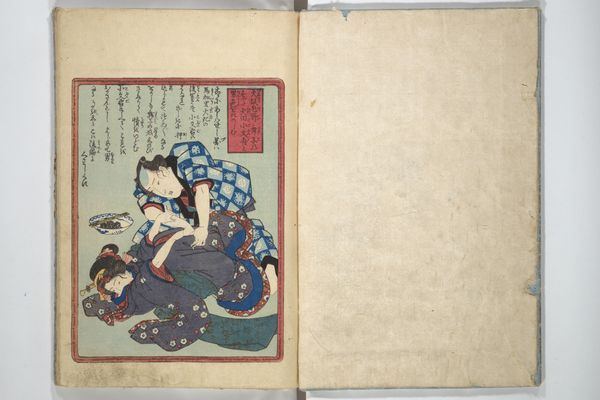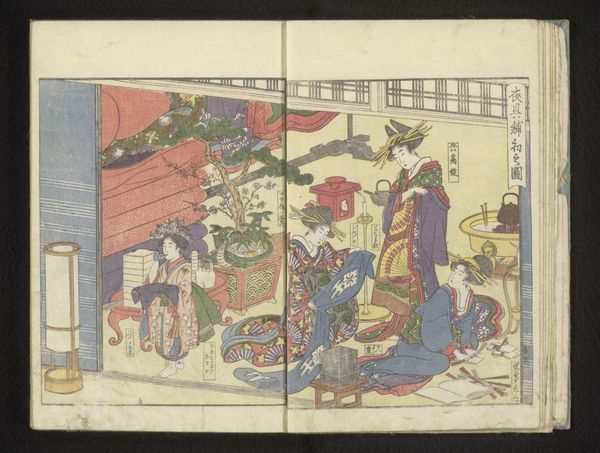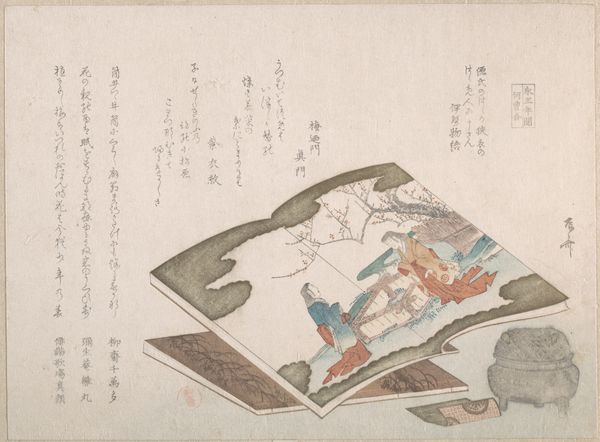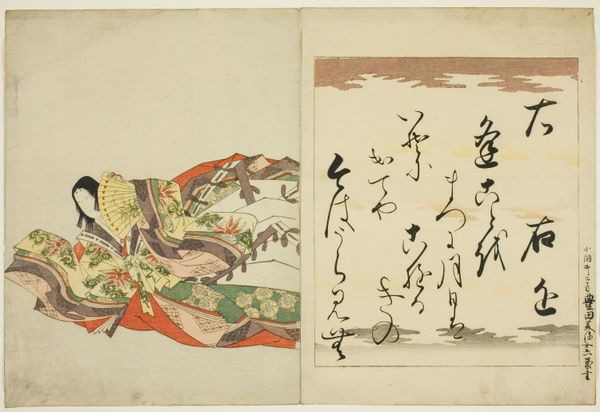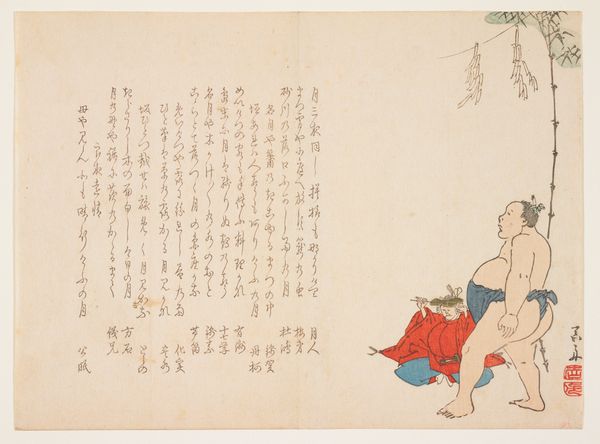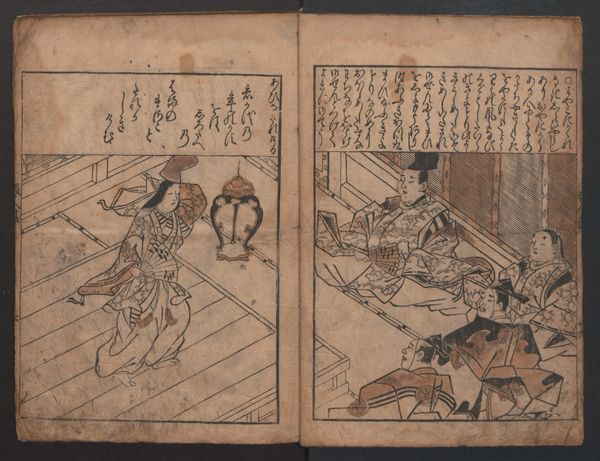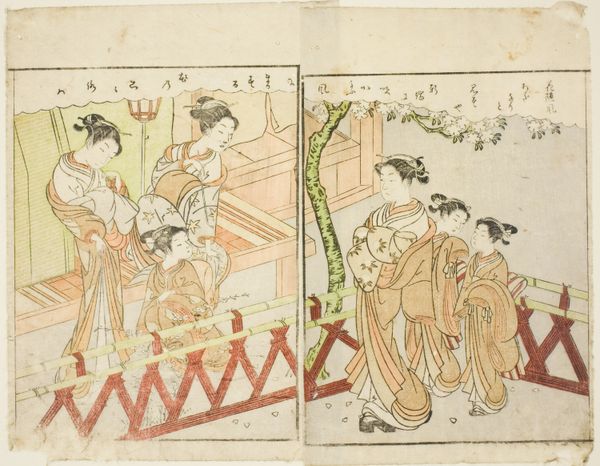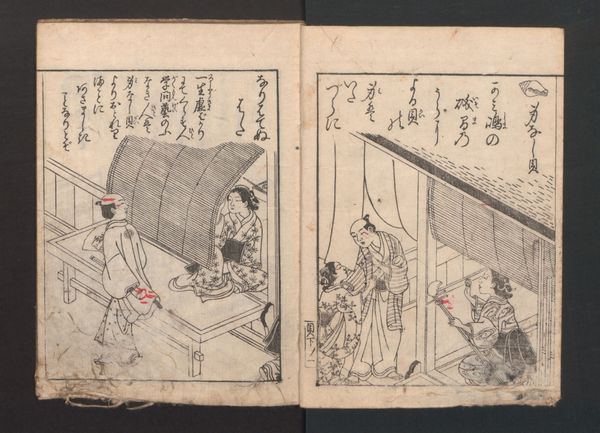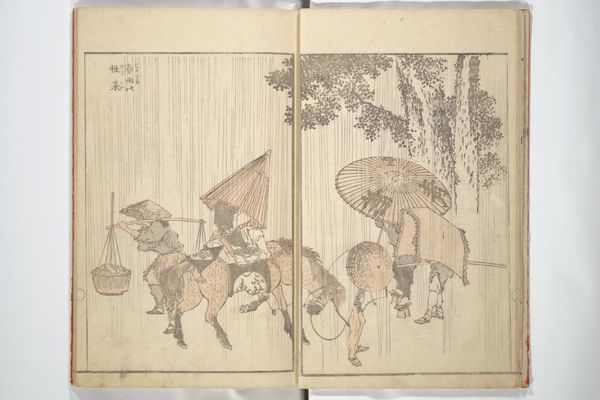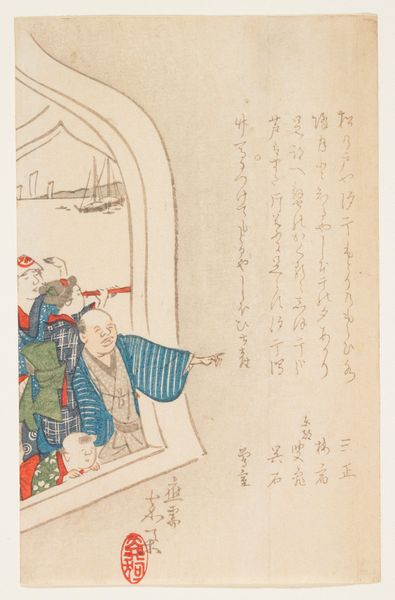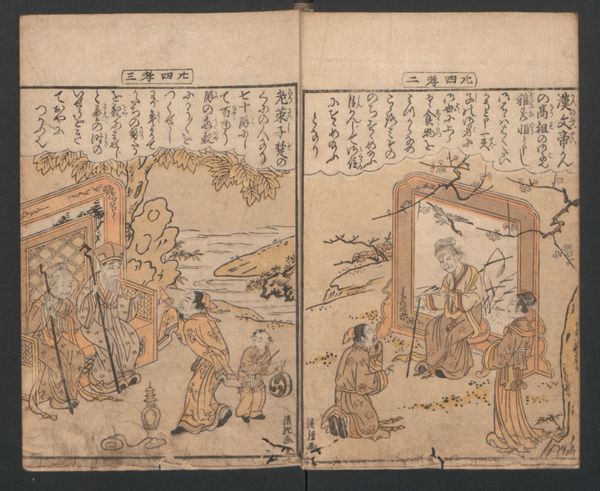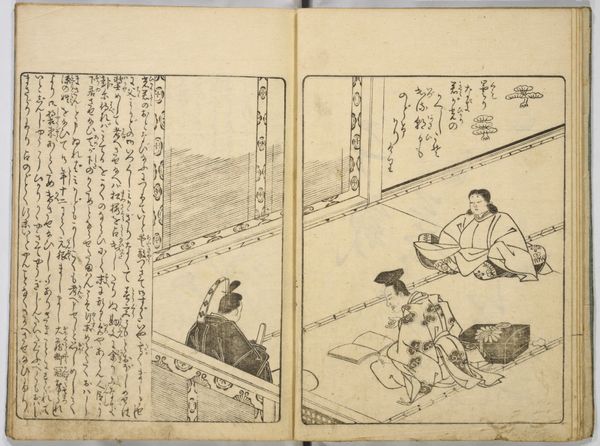
Actors Playing a Ken Game (with dance instructions) Possibly 1848
0:00
0:00
drawing, print, ink, woodblock-print
#
drawing
# print
#
ukiyo-e
#
figuration
#
ink
#
woodblock-print
#
genre-painting
Dimensions: 14 3/8 × 9 5/8 in. (36.5 × 24.5 cm) (image, sheet, vertical ōban)
Copyright: Public Domain
Editor: This print, possibly from 1848, is called "Actors Playing a Ken Game (with dance instructions)" by Utagawa Kunisada. It looks like a page from a book or instructional manual. There are these figures in dynamic poses and clusters of tiny figures with Japanese text all over the place. How can we interpret what’s going on here? Curator: Let’s consider this in the context of Ukiyo-e prints and their function within Edo society. These woodblock prints weren't just art, they were a vital form of popular media. Focusing on actors suggests an interest in celebrity culture. What do you notice about their attire? Editor: They’re in costume, it seems, so it's performance being represented here. And I see all the text, is that related to the game? Curator: Precisely. The “Ken game” was popular entertainment, often performed in theatrical settings. So Kunisada's print operates as a form of advertising or a souvenir for theatergoers, capturing the spectacle of the stage and allowing them to revisit it, maybe even participate, within the domestic space. Note how the inclusion of 'dance instructions' flattens hierarchies between stage and audience; the consumer becomes a potential performer. How do you think this speaks to social mobility within that period? Editor: So it made theater more accessible, breaking it away from elite settings by spreading popular trends through affordable prints. It's fascinating to consider how seemingly simple artworks can tell us so much about cultural exchange and social structure. Curator: Exactly! Thinking about Ukiyo-e in this way demonstrates how prints served as conduits, influencing fashion, leisure activities, and social dynamics within Japanese society, challenging established hierarchies between consumption and production.
